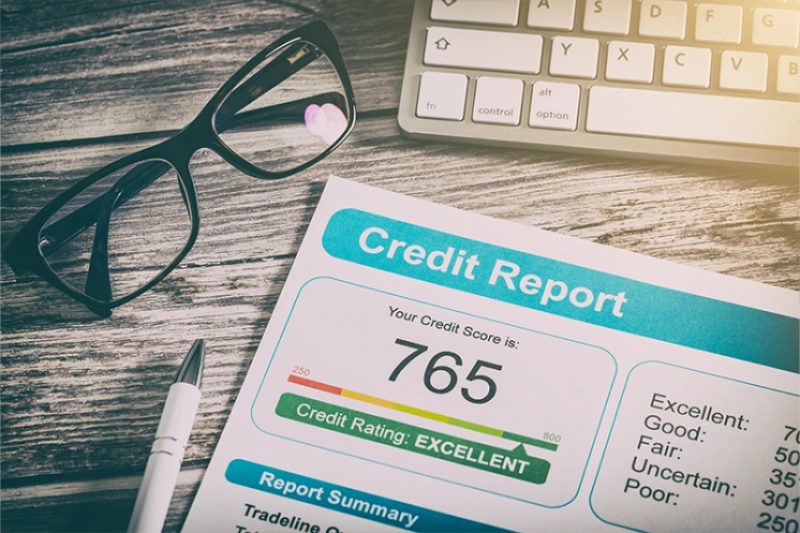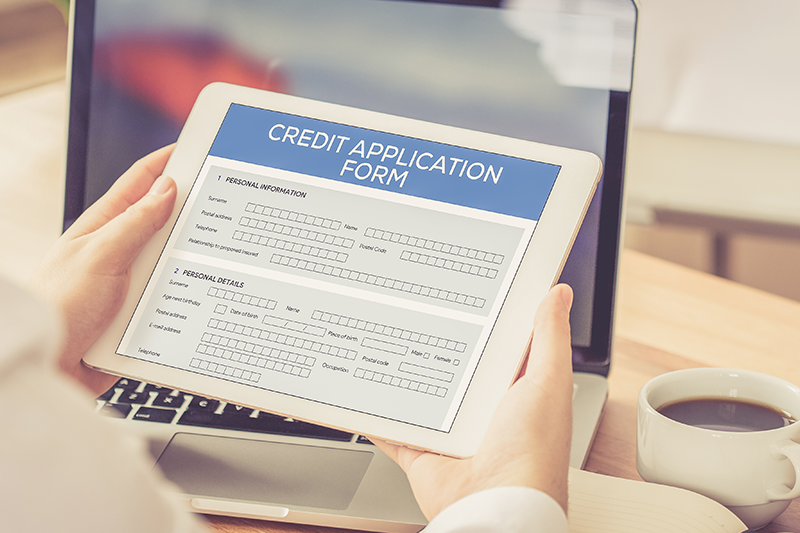How to Get a Credit Card in Seven Simple Steps

Whether you’re new to credit or rebuilding your finances after a setback, learning how to get a credit card is an important step toward a stronger financial future.
A credit card is more than just a tool for online shopping or everyday purchases – it’s a powerful gateway to building credit, qualifying for loans like car loans or personal loans, and even earning bonuses and rewards. Used wisely, a credit card can improve your financial health and open doors to even greater borrowing opportunities.
If you’re not sure where to start, we’ve outlined here how to apply for a credit card in seven simple steps. Let’s take a look.
Determine the Right Credit Card Type for You
Credit cards aren’t one-size-fits-all. Choosing the right card for you depends on a lot of different factors, including your current financial situation and your long-term goals.
Here are the main types of credit cards and how they differ:
Rewards cards: Rewards cards give you benefits like cash back, travel miles or points on everyday purchases, and they’re designed for consumers with good or excellent credit. With a rewards card, you can earn cash or other perks for spending in categories like groceries, gas, dining out and other purchases. Some of the best rewards cards come with a sign-up bonus if you meet a minimum spending requirement in the first few months. These cards can carry higher interest rates and may include an annual fee, so you should weigh the benefits against potential costs.
Balance transfer cards: Balance transfer cards are a helpful tool if you’re carrying debt on an existing credit card. These cards allow you to move a balance from one credit card to another, often with a lower interest rate. Many balance transfer cards offer introductory 0-percent APR promotions, which can greatly reduce the cost of repaying your debt. But – watch for the balance transfer fee, which is typically 3 to 5 percent of the debt amount you transfer. You’ll need to have a strong repayment strategy to take full advantage of the promotional rate before it ends.
Secured credit cards: Secured credit cards are designed for consumers with poor credit, limited credit history, or those working on rebuilding credit. They require a refundable cash deposit –usually equal to your initial credit line – which acts as collateral for the credit card company. For example, a $300 deposit will typically get you a $300 credit card limit. Secured cards report monthly payments to the three major credit bureaus, which can help you build credit over time. Many credit card issuers offer a path to upgrade to an unsecured card after you demonstrate sound credit behavior over time.
Student credit cards: Designed specifically for college students who are new to using credit, student credit cards often come with lower credit score requirements and very few fees. These cards can help young adults responsibly start their credit journey, while earning modest cash rewards for everyday spending. While a student credit card limit is usually lower than that of standard cards, it’s enough to help build a solid payment history and credit health with responsible use.
Business credit cards: A business credit card is designed to help entrepreneurs and small business owners manage expenses and earn rewards on business-related purchases like office supplies, travel and online purchases. These cards can separate business and personal expenses, making bookkeeping easier. Depending on the card, you might qualify for features like employee cards, customizable credit lines, and robust expense tracking. Some business credit cards also offer introductory cash rewards or travel perks.
If you’re not sure which credit card is best for you, consider using a pre-approval tool from a credit card issuer. These tools can show you cards you’re likely to qualify for without triggering a hard credit inquiry on your credit report. That way, you can make more informed financial decisions while protecting your current credit rating.
Pre-qualification results are estimates and not a guarantee of approval. Final credit terms (e.g., APR, credit limit, fees) are determined after a full application and may require a hard credit inquiry.
And keep in mind: if you’re looking for an unsecured card that doesn’t require perfect credit or a security deposit, the Juzt Card may be a great fit. It reports to Equifax monthly, helping you build credit responsibly while offering the convenience of a virtual card.
Virtual card availability and merchant acceptance may vary; additional verification may be required.
Juzt Credit Card is issued by tbom®, Perryville, MO. Standard credit approval required. Terms, rates (APRs), and fees are subject to change. See the Juzt Credit Card Terms and Conditions for complete information, including APRs, fees, and repayment obligations. Approval is not guaranteed.

Assess Your Financial Preparedness
Before applying for a credit card, it’s important to accurately evaluate your current financial status. To start, ask yourself the following questions:
Do I have a steady income?
What are my existing monthly expenses?
Do I have any outstanding debts?
Can I commit to paying my credit card bill on time each month?
These answers can help you decide whether you’re ready to take on the responsibility of a new credit card. Many people jump into the credit card application process without understanding how monthly payments affect their credit utilization ratio or their long-term financial decisions.
Evaluating your financial readiness is especially important if you’re moving from a debit card to a credit card for the first time. Unlike debit cards, credit cards represent borrowed money – and missed or late payments can lead to high interest charges and damage your credit rating.
Research and Compare Issuers
Once you know the type of card you want, it’s time to research credit card issuers. Financial institutions like banks and credit unions offer a wide range of credit card options. But not all credit card companies are created equal. Terms, fees, rewards and customer service can vary widely, so it’s important to evaluate multiple options.
Here’s what you should look for when comparing cards:
Annual fee: Some credit cards charge an annual fee, which may be worth paying if the card offers generous rewards or premium perks. Others offer no annual fee, which can be a smart option if you want to keep costs low.
Interest rates (APRs): Pay close attention to both the regular APR and any promotional APRs the card offers on balance transfers or purchases. Low or 0% introductory APRs can help you save on interest charges if you need to carry a balance at first.
Foreign transaction fees: If you frequently travel internationally or shop from foreign websites, look for cards with no foreign transaction fees. These fees – usually 1% to 3% of every purchase – can add up quickly if you’re not careful.
Sign up bonus: Many credit card issuers offer a sign-up bonus when you meet a minimum spending amount within the first few months. This can be a great way to quickly earn cash rewards, points or travel miles.
Rewards program: Choose a rewards card that works for your lifestyle. Whether you want cash back on groceries, points for other purchases or travel miles, the right card can help you earn rewards on your everyday spending.
Also, consider the long-term value of the card you choose. While a welcome offer might sound appealing, ask yourself whether the card’s benefits outweigh its ongoing costs. For example, if you’re a frequent traveler, a travel rewards card with an annual fee might offer more value than a no-fee card with limited perks.
Finally, take time to review each card issuer’s reputation. Read customer reviews, check ratings from trusted financial publications. Choosing a reputable credit card company is a key step toward setting yourself up for a successful credit journey.
For example, the Juzt Card, issued by tbom®, Perryville, MO and backed by Mastercard®, is a strong example of a card that's accessible without sacrificing digital convenience. Juzt offers pre-qualification with a soft credit check, so you can explore your options without impacting your credit score. And the Juzt card can be an excellent option for those who are looking to build or rebuild their credit history – with Juzt, you’re not just getting a credit card. You’re gaining a tool to help you achieve financial independence.
Check Your Credit Score
Before applying for a credit card, you need to fully understand your credit score. Credit scores play a major role in the approval process and help lenders determine your creditworthiness.
You can access your credit report for free from the three major credit bureaus (Experian, Equifax and TransUnion) at AnnualCreditReport.com. Tools like CreditWise or Credit Karma also can help you monitor your credit scores and track changes over time.
Scores provided by third-party tools may use different scoring models (e.g., VantageScore) and can differ from the scores lenders use.
Below are the key items lenders look at to determine whether they can extend you credit:
Payment history: This is the most important factor in your credit score. Lenders want to see a consistent track record of on-time payments. Late or missed payments can hurt your chances of approval, especially if you're applying for a rewards or balance transfer card.
Credit utilization ratio: This is the amount of credit you're currently using compared to your total available credit. Keeping your utilization below 30 percent [1]is ideal, and staying under 10 percent is even better. A low ratio signals to lenders that you can responsibly manage credit.
Length of credit history: The longer your credit history, the better. Lenders look at how long your accounts have been open, especially your oldest account, plus the average age of all accounts. A long credit history gives more context to your borrowing behavior.
Types of credit used: A healthy credit profile includes a mix of credit accounts, such as credit cards, auto loans, student loans or a mortgage. This variety shows lenders that you can responsibly handle multiple forms of debt.
Recent hard inquiries: When you apply for a new credit card or loan, the lender performs a hard inquiry on your credit report. Too many hard inquiries in a short time period can signal financial distress and temporarily lower your score. That’s why it’s helpful to use a prequalification tool, which uses a soft inquiry instead.
Keep in mind that different cards have different credit score requirements. For example, a score above 700 may qualify you for premium cards, while a score below 580 may limit you to a secured card. But don’t worry if your credit history is thin or non-existent – there are cards designed to help you start or continue rebuilding credit. For example, cards like Juzt can be great choices for consumers who are new to credit or looking to rebuild – plus, the Juzt Card gives you instant digital access to help you start building credit from day one.

Collect Necessary Documentation
Once you’re ready to apply, collect the personal and financial documents you'll need to complete a credit card application. Having these items close at hand will speed up the application process and help you avoid delays.
Here’s what you’ll typically need to submit with your credit application:
Legal full name
Social Security number (SSN) or Individual Taxpayer Identification Number (ITIN)
Date of birth
Physical address (no P.O. boxes)
Phone number and email address
Gross annual income
Employment status and employer name
Monthly housing payment (rent or mortgage)
Some applications also may ask about your savings accounts or other assets to help get a better picture of your overall financial health and your potential credit limit.
Apply for a Credit Card Online or In Person
Once you feel ready, it’s time to apply. Most people apply for credit cards online because it’s fast and convenient. Here’s how:
- Visit the website of the credit card issuer.
- Choose the card that fits your needs.
- Click “Apply Now.”
- Enter your personal and financial details.
- Submit the application.
In some cases, you’ll get an instant decision. If approved, you can generally expect your card within seven to 14 business days. Some issuers, like Juzt, issue a virtual card instantly upon approval, so you can begin using it while your physical card is on the way. Instant decisions and immediate virtual access are not available in all cases and may be delayed by additional verification, fraud checks, or system availability.
In particular, applying for the Juzt Card is quick, easy and fully digital. Start by visiting JuztCard.com, where you can complete a soft credit check to see if you’re pre-approved – without impacting your credit score. If you qualify, you’ll submit a brief online application and get an approval decision within minutes. Once approved, you’ll get instant access to your digital Juzt Card. There’s no security deposit, and your account is reported to Equifax monthly to support your credit-building efforts.
If you prefer in-person interaction, you can visit your local bank during business hours to speak with a representative. You can also apply by phone or mail, but these methods usually take longer.
If your application is denied, don’t panic. You’ll get an explanation from the credit card issuer, which can help you improve your next application. Denials may be based on poor credit, a short credit history or high existing debt.
Pay Attention to the Terms and Conditions
Before you activate and start using your new credit card, take some time to read the fine print. Your card’s terms and conditions outline how interest is charged, what fees apply, and how to earn rewards. Reviewing the details now can help you avoid surprises later.
Here are the key details you should review:
APR for purchases, balance transfers and cash advances: Look at both the regular APR and any introductory rates. These rates will affect how much interest you pay if you carry a balance or make a cash advance. Instant decisions and immediate virtual access are not available in all cases and may be delayed by additional verification, fraud checks, or system availability.
Grace period before interest begins accruing: Most cards offer a grace period on purchases if you pay your balance in full each month. Make sure you understand when interest starts accruing so you can avoid extra charges. Grace periods generally apply to new purchases when the prior statement balance is paid in full. They typically do not apply to cash advances or balance transfers.
Late payment fees and penalty APR: Missing a payment could trigger a late fee or a penalty interest rate. Some credit card companies dramatically raise your APR if you pay late, which can make your balance harder to pay off.
Minimum monthly payments: Understand how your minimum payment is calculated and how much of your balance it will cover. Paying only the minimum can lead to higher interest costs over time.
How rewards are earned and redeemed: If you’re using a rewards card, pay attention to how you earn cash back, points or miles and how you can redeem them. Some programs offer more value than others, and restrictions may apply.
It may not be fun, but taking a few minutes to read the terms and conditions can save you money and frustration in the long run. Knowing what to expect helps make sure you get the most from your credit card while avoiding costly surprises.
Apply Responsible Credit Card Usage Tips
Getting your new credit card is just the beginning. Responsibly using your card is the key to maintaining good credit and unlocking future financial opportunities.
Pay on time: Set up reminders or use autopay to make sure you never miss a due date. On-time payments are the most important factor in your credit score and help you avoid late fees and penalty APRs.
Keep your balance low: Aim to use less than 30 percent of your available credit line. Low balances signal that you’re managing your credit well and can help improve your credit score over time.
Avoid cash advances unless absolutely necessary: Cash advances usually come with higher interest rates and fees, plus they often start accruing interest immediately with no grace period. Only use them if you have no other options.
Don’t max out your credit limit: Even if you plan to pay it off right away, maxing out your card can negatively affect your credit utilization ratio. Lenders may see this as a sign of financial distress or mismanagement.
Regularly monitor your credit report: Check your credit reports from the three major bureaus — Equifax, Experian and TransUnion — for any errors or signs of fraud. You can access a free report from each bureau once a year at AnnualCreditReport.com.
Stick to a repayment strategy: Try to pay your full balance each month to avoid interest. If that’s not possible, prioritize paying more than the minimum to reduce your balance faster and save on interest.
By using your card responsibly, you can build credit, improve your credit score, and qualify for better credit offers in the future.
[1] 30%” is a general guideline, not a threshold used by scoring models. Lower utilization may support better outcomes, but results vary.